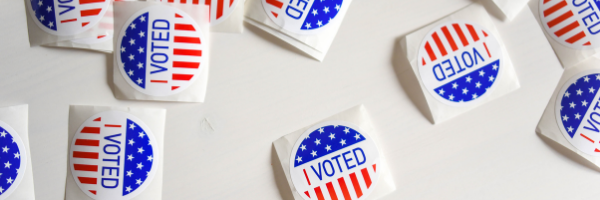Ohio voters defeated Issue 1, which would have made changes to the laws governing citizen-initiated constitutional amendments, including increasing the vote requirement to 60% for constitutional amendments, on Aug. 8, 2023. With 95% reporting, election results show 57% of voters opposed and 43% of voters in favor.
The One Person One Vote campaign, which led the opposition campaign to Issue 1, said, “Tonight was a major victory for democracy in Ohio. The majority still rules in Ohio, and the people’s power has been preserved – because Ohio voters showed up and overwhelmingly voted down Issue 1. Voters saw Issue 1 for what it was: a deceptive power grab designed to silence their voices and diminish their voting power. We defeated Issue 1 because an enormous coalition that spanned traditional ideological divides came together to defend democracy.”
President Joe Biden (D) also responded to the defeat of Issue 1, saying, “Today, Ohio voters rejected an effort by Republican lawmakers and special interests to change the state’s constitutional amendment process. This measure was a blatant attempt to weaken voters’ voices and further erode the freedom of women to make their own healthcare decisions. Ohioans spoke loud and clear, and tonight democracy won.”
According to the secretary of state’s office, the unofficial voter turnout for the Aug. 8 special election was 38.54%. That’s nearly five times the turnout of last year’s special election on Aug. 2, 2022, which had a voter turnout of 8.01%.
Issue 1, if it had been approved, would have made three changes to the laws governing citizen-initiated constitutional amendments in Ohio. This amendment would have made the first change to the state’s initiative signature requirements since voters approved the process in 1912. Issue 1 would have:
- Required campaigns for initiated constitutional amendments to collect signatures from each of the state’s 88 counties, an increase from the current requirement of 50% of the state’s 88 counties. Campaigns would have needed to collect a number of signatures equal to 5% of the vote in the last governor’s election in each of the counties. This is known as a signature distribution requirement.
- Required a 60% vote for voters to approve a constitutional amendment, whether citizen-initiated or from the General Assembly. Currently, a constitutional amendment requires a simple majority vote (50% plus one) to be approved in Ohio.
- Eliminated the cure period of 10 days for campaigns to gather additional signatures for citizen-initiated constitutional amendments when the original submission did not have enough valid signatures.
If it had been approved, Issue 1 would have affected future constitutional amendments, including an amendment regarding abortion and reproductive decisions set to appear on the Nov. 7, 2023, ballot, by raising the voter requirement to approve a constitutional amendment from 50% to 60%.
Ohio Secretary of State Frank LaRose (R), who supported Issue 1, reacted to the defeat of the amendment, saying, “I’m grateful that nearly 1.3 million Ohioans stood with us in this fight, but this is only one battle in a long war. Unfortunately, we were dramatically outspent by dark money billionaires from California to New York, and the giant ‘for sale’ sign still hangs on Ohio’s constitution. Ohioans will see the devastating impact of this vote soon enough. The radical activists that opposed Issue 1 are already planning amendments to shut parents out of a child’s life-altering medical procedure, force job killing wage mandates on small businesses, prevent law abiding citizens from protecting their families and remove critical protections for our first responders.”
Protect Women Ohio, the campaign opposing the November abortion amendment that also raised funds in support of Issue 1, said that Tuesday’s election results “prove exactly why Ohio’s constitution needs and deserves additional protections” and said they would “defeat the ACLU in November.”
Ohio is one of 26 states that allow for citizen-initiated ballot measures at the state level. The ballot initiative process allows citizens to propose statutes or constitutional amendments, depending on the state, and collect signatures to place their proposals on the ballot for voters to decide.
Issue 1 would have made Ohio the state with the highest voter approval requirement to pass citizen-initiated constitutional amendments, alongside Florida. New Hampshire, which doesn’t have an initiative process, has a higher threshold—a 66.67% vote—for legislatively referred constitutional amendments.
Issue 1 would also have made Ohio the only state where campaigns must gather signatures from every one of the state’s counties. Ohio has 88 counties, ranging from the 1.32-million-person Franklin County to the 12,565-person Vinton County. Colorado and Nevada also have signature distribution requirements requiring campaigns to gather signatures from each subdivision of the state. In Colorado, campaigns must collect signatures from each of the state’s 35 Senate districts, and, in Nevada, campaigns must collect signatures from each of the state’s four congressional districts.
The campaigns supporting Issue 1, which included the Protect Our Constitution PAC, as well as Protect Women Ohio and Protect Our Kids Ohio, both of which reported spending funds to support Issue 1, raised $15.5 million in cash and in-kind contributions. The largest donors included Susan B. Anthony Pro-Life America, contributing $6.35 million, and Richard Uihlein, contributing $4 million. Meanwhile, the campaign opposing Issue 1, the One Person One Vote PAC, reported raising $16.6 million in cash and in-kind contributions, the largest donors including the Sixteen Thirty Fund, which contributed $2.6 million, and the Tides Foundation, which contributed $1.87 million.
The constitutional amendment regarding abortion in November will need a simple majority vote to pass in November. Rhiannon Carnes, a spokesperson for Ohioans United for Reproductive Rights, a coalition supporting the November abortion amendment, said, “Ohioans saw Issue 1 for what it was—an attempt to deny our families a voice, even when it comes to our most personal decisions.”
Additional reading:


